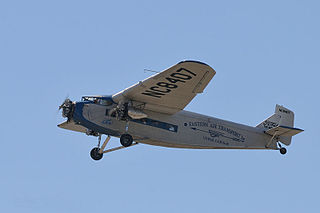
The Ford Trimotor is an American three-engined transport aircraft. Production started in 1925 by the companies of Henry Ford and ended on June 7, 1933. A total of 199 Ford Trimotors were made. It was designed for the civil aviation market, but also saw service with military units.

The Monocoupe 90 was a two-seat, light cabin airplane built by Donald A. Luscombe for Monocoupe Aircraft. The first Monocoupe was built in an abandoned church in Davenport, Iowa, and first flew on April 1, 1927. Various models were in production until the late 1940s.
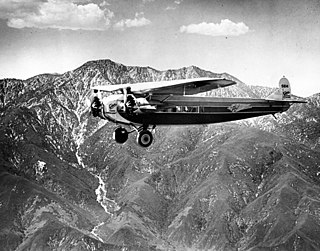
The Fokker F-10 was an enlarged development of the Fokker F.VII airliner, built in the late 1920s by the Fokker Aircraft Corporation of America. It carried 12 passengers, four more than the F.VII, and had a larger wing and more powerful engines.

The Aeronca L was a 1930s American cabin monoplane designed and built, in small numbers, by Aeronca Aircraft. It differed significantly from other Aeronca planes by the use of radial engines, streamlining, and a cantilever low wing.

The Caproni Ca.97 was a civil utility aircraft produced in Italy in the late 1920s and early 1930s. As originally designed, it was a high-wing braced trimotor monoplane of conventional configuration with one engine mounted on the nose and the other two carried on strut-mounted nacelles at the fuselage sides. Examples were also produced with only the nose engine or only the two nacelle-mounted engines.
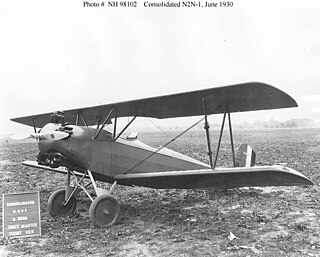
The Fleet Model 1 and its derivatives were a family of two-seat trainer and sports biplanes produced in the United States and Canada in the 1920s and 1930s. They all shared the same basic design and varied mainly in their powerplants.
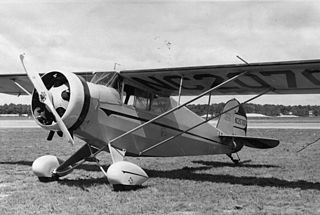
The Porterfield Model 35 Flyabout was an American two-seat cabin monoplane built by the Porterfield Aircraft Corporation of Kansas City.

The Fokker F.XIV was a cargo plane built in the Netherlands in the late 1920s by Fokker. It was a high-wing cantilever monoplane of conventional trimotor layout. The sole example was tested by KLM but never put into service.

The PZL.4 was a Polish three-engine passenger aircraft for 10 passengers, built in PZL factory in 1932, which remained a prototype. It was the first Polish-designed and produced multi-engine plane.

The Bach Air Yacht was a trimotor airliner produced in the United States in the 1920s. Typical of its day, it was a high-wing braced monoplane, with fixed tailwheel undercarriage. Unusual for airliners of the late 1920s, the Air Yachts were constructed almost entirely of wood with steel fittings, undercarriage, and struts. Different models were powered by varying combinations of Wright, Ryan-Siemens, Kinner, Comet, and Pratt & Whitney engines, a large engine in the nose of the aircraft, and two smaller "helpers" under the wings in nacelles supported by struts. As with so many aircraft companies of the late 1920s, the Bach Aircraft Company succumbed to the Great Depression, thus further development of the Air Yacht was abandoned after the 3-CT-9.
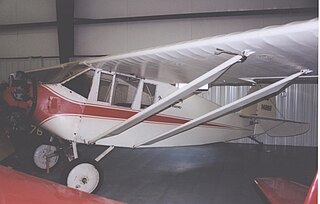
The Star Cavalier was an American two-seat high-wing light aircraft first introduced in the late 1920s.

The Stout Skycar was a series of four one-off American light aircraft of the 1930s.
The Yakovlev UT-3, initially known as the AIR-17 and then Ya-17, was a twin-engine low-wing monoplane aircraft designed by Alexander Sergeyevich Yakovlev for the Soviet Air Force (VVS).
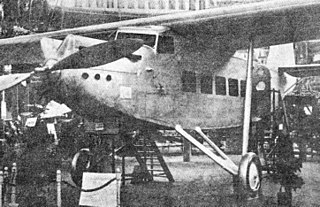
The Dewoitine D.30 was a ten-seat cantilever monoplane built in France in 1930. The D.30 was a single-engine aircraft but the second was completed as a trimotor and redesignated D.31.
The St. Louis C2 Cardinal family are a series of light sport monoplanes built by the St. Louis Aircraft Corporation during the peak of the Lindbergh Boom after the Spirit of St. Louis flight of 1927.

The Gee Bee Model A was an American two-seat open cockpit single-bay biplane developed by the Granville Brothers that first flew in 1929.
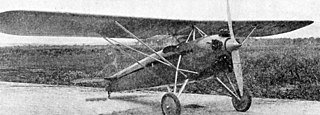
The Inland Sport series of parasol wing, sport and training side-by-side two seaters, introduced between 1928 and 1930, differed chiefly in their engines. They used three different radial engines, more than doubling the Sport's power over two years of development. 34 examples were built and frequently re-engined.
The Watkins Skylark was an American low-wing, cantilever two-seater designed for private and club use. A large anticipated production run in 1930 ended early when the company collapsed in the Great Depression, with only five or six registered.
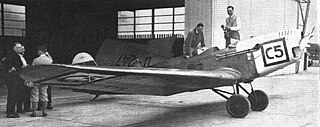
The Klemm L 26, later Klemm Kl 26, was a low-wing trainer aircraft built by Klemm.
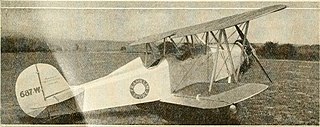
The Franklin Sport is a two seat sport and training biplane built in the U.S. in 1930. Several different engines, in the power range 55–90 hp (41–67 kW), were fitted. Two remained airworthy in 2011.


















